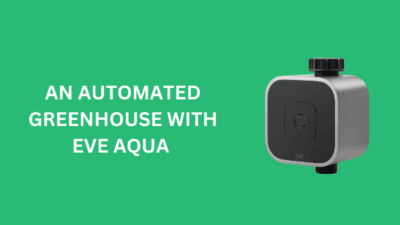Smart plugs help reduce energy waste by cutting off standby power (also known as phantom or vampire power), lowering overall electricity consumption. By automating power schedules, they can prevent unnecessary energy use, reduce strain on power plants, and decrease carbon emissions.
Table of Contents
But while smart plugs reduce energy usage, do they actually save you money? Let’s break it down.
Smart Plug Energy Savings: Breaking Down the Costs
The following examples provide an estimate of potential savings. Keep in mind that the calculations assume:
- The device remains in standby mode permanently.
- A constant energy tariff of 30p per kWh.
- The goal is illustration rather than precise real-world savings.
Example 1: The Average 40-Inch TV
A typical TV in standby mode uses 0.3W to 1W of power. Assuming an average of 0.5W (0.0005 kW) at £0.30/kWh, the costs are:
| Mode | Daily kWh | Daily Cost | Yearly Cost |
|---|---|---|---|
| Standby (0.5W) | 0.012 | £0.0036 | £1.31 |
| Higher Standby (1W) | 0.024 | £0.0072 | £2.63 |
A smart plug can eliminate this waste, but at £9.99 for a Tapo P110 plug, it could take five years to break even.
Example 2: The Xbox One
An Xbox One in Instant-On mode consumes 10W (0.01 kW):
| Mode | Daily kWh | Daily Cost | Yearly Cost |
|---|---|---|---|
| Instant-On (10W) | 0.24 | £0.072 | £26.28 |
| Energy-Saving Mode (0.5W) | 0.012 | £0.0036 | £1.31 |
By simply turning off Instant-On mode, you could save over £26 per year—enough to buy three smart plugs annually. However, if the console is already set to Energy-Saving mode, it would take eight years to recoup the cost of a smart plug.
Peak and Off-Peak Tariffs: Can Scheduling Save More?
Some EV-friendly electricity tariffs offer cheaper, greener electricity during off-peak hours (e.g., 2 AM–8 AM in winter). Smart plugs allow you to schedule high-energy appliances (like dishwashers or washing machines) to run at these times, reducing reliance on fossil fuels and lowering costs.
However, not all appliances can (or should) be run overnight. Personally, while I try to optimise these hours, I’m not comfortable running large electrical devices while asleep.
Technology Lifespan Considerations: Are Frequent Upgrades Counterproductive?
Smart plugs can last over five years, but technology evolves quickly. Older Bluetooth or Apple HomeKit plugs have been replaced by WiFi and Matter-enabled versions, raising a key question:
Do frequent upgrades cancel out savings?
For example, I upgraded from:
- Eve Energy Bluetooth → Eve Energy Thread → Tapo P110 → Tapo P110m (for Matter support).
In hindsight, I’m not sure I needed to upgrade to the Tapo P110M, since most of my power automation runs through Home Assistant. While upgrades are sometimes inevitable, it’s worth questioning whether they are truly necessary.
The Smart Plug Mindset: More Than Just Money?
I use Home Assistant to track my energy usage across multiple Tapo plugs (some individual, some on four-plug gangs) and my car charger.

By reviewing daily energy usage, I’ve noticed an important shift:
Smart plugs may not directly save huge amounts of money, but they encourage an energy-saving mindset. When you focus on saving energy at the device level, it leads to a more holistic, conscious approach throughout the home.

Comparing Approaches: Focused vs. Relaxed Energy Use
To test the impact of energy-saving automations, I ran a simple two-month experiment:
November: Focused Energy Use
- High-energy appliances (dishwasher, tumble dryer, washing machine) were run between 6 AM and 8 AMwhenever possible.
- Electricity during this time cost 15p per kWh, rising to 30p after 8 AM.
- Home Assistant tracked both peak and off-peak usage.

Total electricity cost in November: £126.14
December: Less Restrictive Usage
- I turned off energy-saving automations.
- I stopped checking my Home Assistant energy dashboards.
- Car charging (hybrid) remained off-peak.

Total electricity cost in December: £145.21
Analysing the Difference
I am able to deep dive on a per device basis over the month.

- Car charging increased by 27 kWh, accounting for £4 of the cost increase.
- After accounting for that, there was still a £15 difference between the two months.
- If even half of this difference resulted from a more relaxed approach, then it’s clear that energy-conscious habits make a real impact.
The Carbon Footprint Consideration
Even if financial savings are small, smart plugs encourage eco-friendly habits by making users more aware of their energy consumption. Widespread adoption of smart plugs could help reduce unnecessary power use and lower carbon footprints.
The Energy Saving Trust
If you’re looking for ways to save energy, I highly recommend visiting the Energy Saving Trust website. They provide reliable, practical advice on improving energy efficiency and reducing carbon emissions. (Link below!)
The Verdict: Do Smart Plugs Actually Save Money?
- For high-standby power devices (like an Xbox in Instant-On mode), the savings can be significant.
- For low-power devices (like TVs in standby), it can take years to break even.
- The biggest benefit? Smart plugs raise awareness and encourage broader energy-saving habits.
While financial savings are debatable, the environmental impact is undeniable—smart plugs help cut unnecessary power use and reduce carbon footprints.
What’s your experience?
Do you use smart plugs? Have they saved you money or changed your energy habits? Let’s discuss in the comments below!
Links:
The Starling Home Hub Review
The Energy Saving Trust






